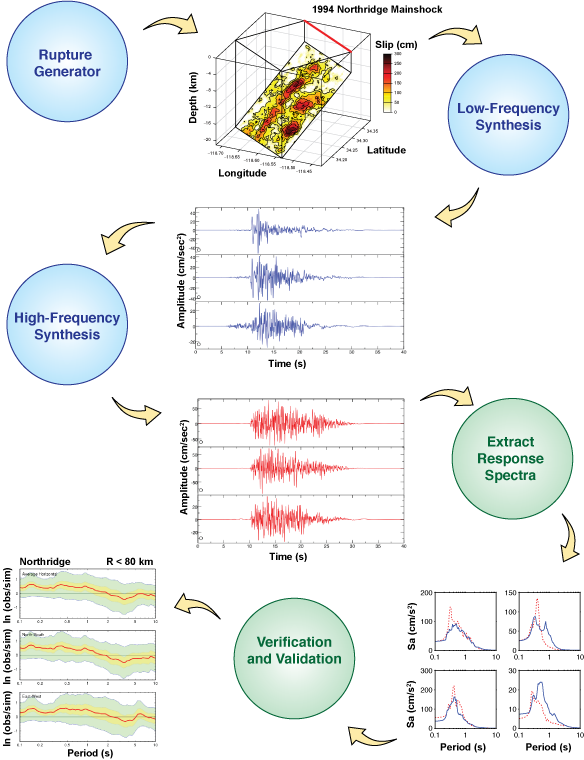-
Notifications
You must be signed in to change notification settings - Fork 29
Home
The SCEC Broadband Platform is a software system that can generate 0-100 Hz seismograms for historical and scenario earthquakes in California, Eastern North America, and Japan using several alternative computational methods.
The goal of the SCEC Broadband Simulation Platform is to generate broadband (0-100 Hz) ground motions for earthquakes. The SCEC Broadband Platform is a collaborative software development project involving SCEC researchers, research engineers, graduate students, and the SCEC/CME software development group. SCEC scientific groups have contributed modules to the Broadband Platform including rupture generation, low- and high-frequency seismogram synthesis, non-linear site effects, and visualization. These complex scientific codes have been integrated into a system that supports easy on-demand computation of broadband seismograms. The SCEC Broadband Platform is designed to be used by both scientific and engineering researchers with some experience interpreting ground motion simulations.
Users may calculate broadband seismograms for both historical earthquakes (validation events including Northridge and Loma Prieta) and user-defined earthquakes. The platform produces a variety of data products, including broadband seismograms, rupture visualizations, and several goodness-of-fit plots. Users can install the platform on their own machine, verify that it is installed correctly, and run their own simulations on demand without requiring knowledge of any of the code involved. Users may run a validation event, supply their own simple source description, or provide a rupture description in SRF format. Users may specify their own list of stations or use a provided list. Currently the platform supports stations and events in Southern California, the Bay Area, the Mojave Desert, Eastern United States, Eastern Canada, Central and Western Japan. Users may select among various method that include rupture generation, low-frequency synthesis, high-frequency synthesis, and incorporation of site effects, with the option of running a goodness-of-fit comparison against observed or simulated seismograms. These codes have been validated against recorded ground motions from real events.
The Broadband Platform software development is performed using modern software engineering practices, including version control, user documentation, acceptance tests, and formal releases, with the aim of accuracy, reliability, ease of installation and use.
The Broadband Platform documentation available on this wiki is the latest available and may refer to functionality available only on the development branch of the Broadband Platform. For documentation to a specific version of the Broadband Platform, please refer to the 'doc' folder included on the distribution package.
This wiki is licensed by University of Southern California (USC) to the public under a Creative Commons Attribution 4.0 license.
